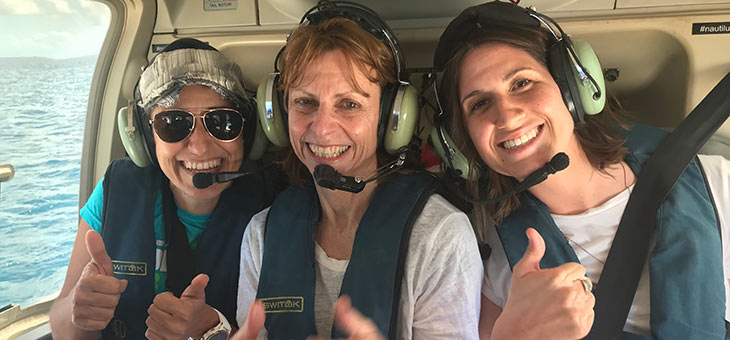The Great Barrier Reef has been a hot topic for almost a decade. One of the natural wonders of the world, one of the largest living organisms in the world, is hurting. It’s yet another alarming casualty of global warming.
So should we rush to see the reef? Is it too late? Will we be disappointed?
A great launching pad for the reef – and rainforest – is Cairns in north Queensland, which is perfectly positioned to explore some of the world’s great treasures.
And perfectly positioned on The Marina is the five-star Shangri-La. The vessels that head out to the reef are just metres away.
I’ve done my homework and decided on one of the newest boats – not for that reason but because of where the catamaran goes … and how quickly it gets there. I’ve been seasick before and don’t wish to prolong the agony if conditions get a little rough.
So it’s the Evolution run by Down Under Cruise and Dive for me. The day’s offerings – two snorkels or snorkel/dive, plus optional semi-submersible sub to view the coral and 10-minute helicopter ride to see the reef in all its glory plus lunch, afternoon tea and a super enthusiastic crew – are a cinch.
The operator has moorings at Normans and North Hastings and the Evolution covers the 57km in 80 minutes.
And if you want a real treat, book Gold Class.
Our group headed out on schedule at 8.15am, in gold class, with a basket of seasickness tablets for anyone feeling nervous. Better to be safe than sorry in my view. The service and amenities were faultless and the staff were friendly and enthusiastic. But what will the reef be like? I’d spent several days snorkelling off Lady Elliot Island in the early 2000s and was dubious that any other part of the reef could measure up to the standard.
First stop was Norman’s Reef. We were fitted with wetsuit, flippers and snorkel en route and acquainted with the do’s and don’ts by marine biologist Phil. He is very protective of the reef, as he should be. Don’t stand on or damage any coral, stay within the ropes, listen out for the lookout … He also explained how the tour operators play an important role in photographing and reporting changes to the reef in the areas they visit. They’re there every day and they care.
The average water temperature ranges from about 23°C in July to 29°C in January, so wetsuits are not really needed. However, they help with buoyancy and are also protection – just in case – against some of the nasties that generally lurk only closer to shore, such as box and irukandji jellyfish.
There is no doubt that the reef is under massive stress, there is also no doubt that it offers up a magnificent vista. While patches of coral are either dead or dying and have lost their vibrant colours, the fish life is a (visual) feast to behold. There were too many varieties to count and why bother – just look and enjoy. You can check species on the information sheets on the boat later. You could spend hours watching the passing parade under the water. There’s almost no need to swim but it’s fascinating to explore the canyons and crevices. Until hunger bites.
After a delicious lunch of prawns, pasta, steaks and salads, it was time to move to the second destination, North Hastings. The tide was lower there and the turquoise blue colours even more brilliant. But before our second snorkel (or dive for some), we were ferried to the helipad for our flyover on the Nautilas. Here was our chance to gain an appreciation of the expanse of this reef – one small link in the 3200km chain. There was just one boat in this area, ours, and it looked like a matchbox toy among the brilliant colours. The 10-minute flight was great value.
Back on deck, it was quickly back in the water. Why waste a moment? The variety of fish life here was even better. A huge school of black and orange fish were totally entrancing. Underwater canyons, bommies, a bigger variety of coral colours and startling white patches of sand. How could anyone tire of such a vista?
And for anyone recalling the incident in 1998 when two divers were accidentally left behind by a Port Douglas company, let me reassure you that the safety procedures were solid. We were assigned numbers after boarding and faces and numbers were triple checked before we left any location. And there was always a lifeguard on duty watching snorkellers and divers – for their own sake and to safeguard the reef.
We were back in Cairns by about 4.30 – pleasantly tired, blissfully stimulated and delighted to know that the tour operators are performing a valuable role as watchdogs of the reef. It’s not Lady Elliot, but it’s more easily accessible and I wasn’t disappointed.
Have you snorkelled on the Great Barrier Reef? Have you seen reefs overseas? Have you noticed the effects of global warming?
*Janelle Ward travelled as guest of Down Under Cruise and Dive.
If you enjoy our content, don’t keep it to yourself. Share our free eNews with your friends and encourage them to sign up.
Related articles:
Qantas carry-on rule changes
Aussies prefer travel to sex
There’s no place like home

